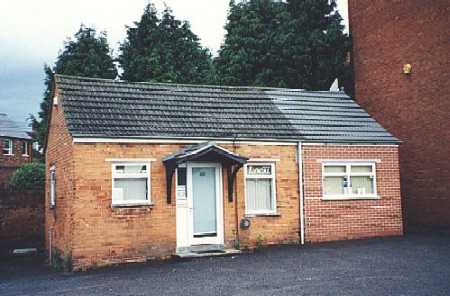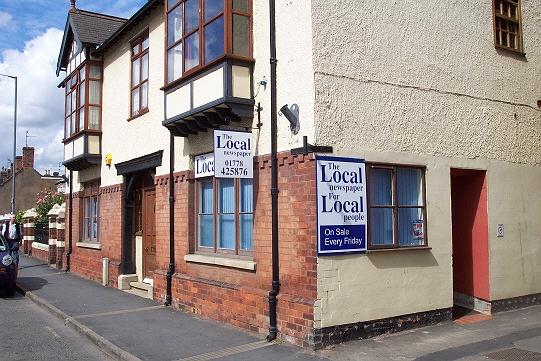|
Newspapers

Bourne is a small
market town with a population of around 15,000 and yet it is well endowed with local newspapers but whether these newspapers serve us well is another matter. I have been taking a close look
at the five that circulate in our area and I find their coverage as varied as their advertising for it is quite obvious that most, in varying degrees, put revenue first rather than to inform their readers about the events in their community which in past times was seen as the first duty of such publications.
Advertising is necessary for a newspaper to survive because this revenue meets the bulk of its costs while the cover price in most cases is eaten up by circulation expenses. But publishers should not lose sight of the fact that although they must attract advertising, it is the editorial that sells a newspaper, the sugar coating on the commercial pill, and if the column inches devoted to local affairs are cut at the expense of advertising, then we must question the validity of the publication.
This is the main criticism of the Herald and Post, an advertising publication masquerading as a newspaper, full of syndicated features and token stories from the locality with little effort being made to tell us what has really been happening in our town in the past seven days. It is actually based in Peterborough and one glance through its thirty or more pages each week will reveal that its heart in not with the church groups or the voluntary organisations, the scouts and the guides, the schools, the youth clubs and the charities, but with the estate agents and the second hand car salesmen who take page upon page in an attempt to sell their wares. This newspaper is also given away free, popped through most letter boxes each week whether we want it or not, and so I suppose we cannot grumble about something we do not have to pay for.
The Lincolnshire Free Press is an old established newspaper and part of a large publishing group but it based in Spalding and is therefore mainly concerned with events in that town and district although it likes to keep a foot in Bourne. Its pages usually carry several stories from the area but it is hard to shake off its Spalding provenance and there is no attempt at a complete coverage of our affairs. Property sales fill the bulk of the advertising pages and there are many who buy it while house hunting.
The only evening newspaper that circulates in Bourne is The Telegraph although this is purely a token appearance as far as local coverage is concerned. Stories of people, places and events from the district are rare but it is very lively and extremely readable and as it covers a large catchment area around Peterborough of which Bourne is a part, then it is a welcome addition to our regular digest of news. But do not look here for a wedding report of the girl next door or for details of a funeral or garden fete because
The Telegraph is very selective in what it prints and the mundane takes second place to the sensational. You will not find mention of hatches, matches and despatches in its editorial columns although like all newspapers, they will be happy to carry such announcements for a price in their public announcements section under Births, Marriages and Deaths. This newspaper is based in Peterborough and as a young reporter in the early 1950's, I worked for its embryo publication the
Peterborough Evening Telegraph, then just a two-page slip edition inside its big brother which was published in Kettering but
The Telegraph has grown up since those days and is now a very professional regional evening newspaper by any standard.
By far the biggest weekly to circulate in Bourne is the Stamford Mercury, a local edition of Britain's oldest newspaper founded in 1695. Recent issues have been around eighty pages and although little editorial extends beyond the centre fold where human interest collides with commercialism, its size is trumpeted from the masthead with slogans like "Bourne's Biggest Weekly Newspaper" and "More than three times the size of some ordinary weekly papers", the latter an obvious reference to their more puny rival but then bigger is not always better as we shall see. But it is produced in Stamford and this is evident because there is a very strong bias towards that town, something that is always reflected in the Letters Pages, although the news coverage for Bourne is excellent, including that from the outlying villages, and the layout extremely good with many pictures, some of them in colour. Overall this is a most presentable newspaper and one that we in the trade would call a very good read.
And so we come to The Local, an oddity when it was launched as the Bourne Local in October 1989 and one that I thought would not survive. But I have been pleasantly surprised because this is a newspaper that clings to the old values of district reporting, where people matter more than events, and so we find it full of names, wedding guests and mourners at funerals, club officials, prize winners, footballers, cricketers and anglers, mums and dads and children, people, people, people. I started my career in journalism on a weekly newspaper and the edict from my editor was that every name used was a reader who bought a copy of the newspaper and so we should mention everyone and it was a perilous mistake to leave anyone out.
|
 |
|
The former newspaper office of The Local
just off Abbey
Road (above), small but
effective, but vacated in June 2004 for
larger premises in West
Street (below). |
|
 |
The Local
may only be a mere twenty-eight or, sometimes thirty-two, pages but it is punching its weight and in the short time it has been on the scene has earned its place on the news stands and is a favourite in many homes. It certainly gives the most comprehensive coverage of weekly events in and around Bourne and were more advertising to come its way, it could afford to expand in size. The newspaper has far more local business and classified advertising than any of its competitors and yet no estate agents appear to use its columns and fewer second hand car agencies than in the others but then an independent publication such as
The Local cannot compete with the syndicated rates and circulations offered by its competitors and their companion house publications. If these advertisers were to overcome their misgivings on this score, they might well discover that
The Local would take their product into far more homes than they realised and Bourne would find itself with a sizeable local newspaper that feared competition from no one.
What then would I tell a visitor to the town who asked which was the best newspaper to buy, the one that would accurately reflect what was going on in our community? I would most certainly recommend
The Local, because it is crammed with the minutiae of life in a small town and one issue would mirror a week of our activities. But in addition, I would suggest buying the
Stamford Mercury for its professionalism and extensive advertising. I would also say unequivocally that there was no need to read the other three and in time, if
The Local is given a favourable wind, perhaps the Stamford Mercury
may also become redundant although the latest intelligence is that it is
fighting back and may soon open an office in the town.
NEW OWNERS FROM 2017
In December 2016, The Local was one of
thirteen newspapers in the East Midlands and East Anglia sold by Johnston Press
to Iliffe Media, an independent family-run business based in Cambridge, in a
deal worth £17 million.
Other titles included in the deal were the
Stamford Mercury, the Lincolnshire Free Press, the Spalding
Guardian and the Grantham Journal and Johnston Press chief executive
Ashley Highfield gave assurances that all of the titles would continue to
publish under their present staffs.
See also
The birth of The Local
newspaper
REVISED JANUARY 2017

Go to:
Main Index Villages
Index
|


